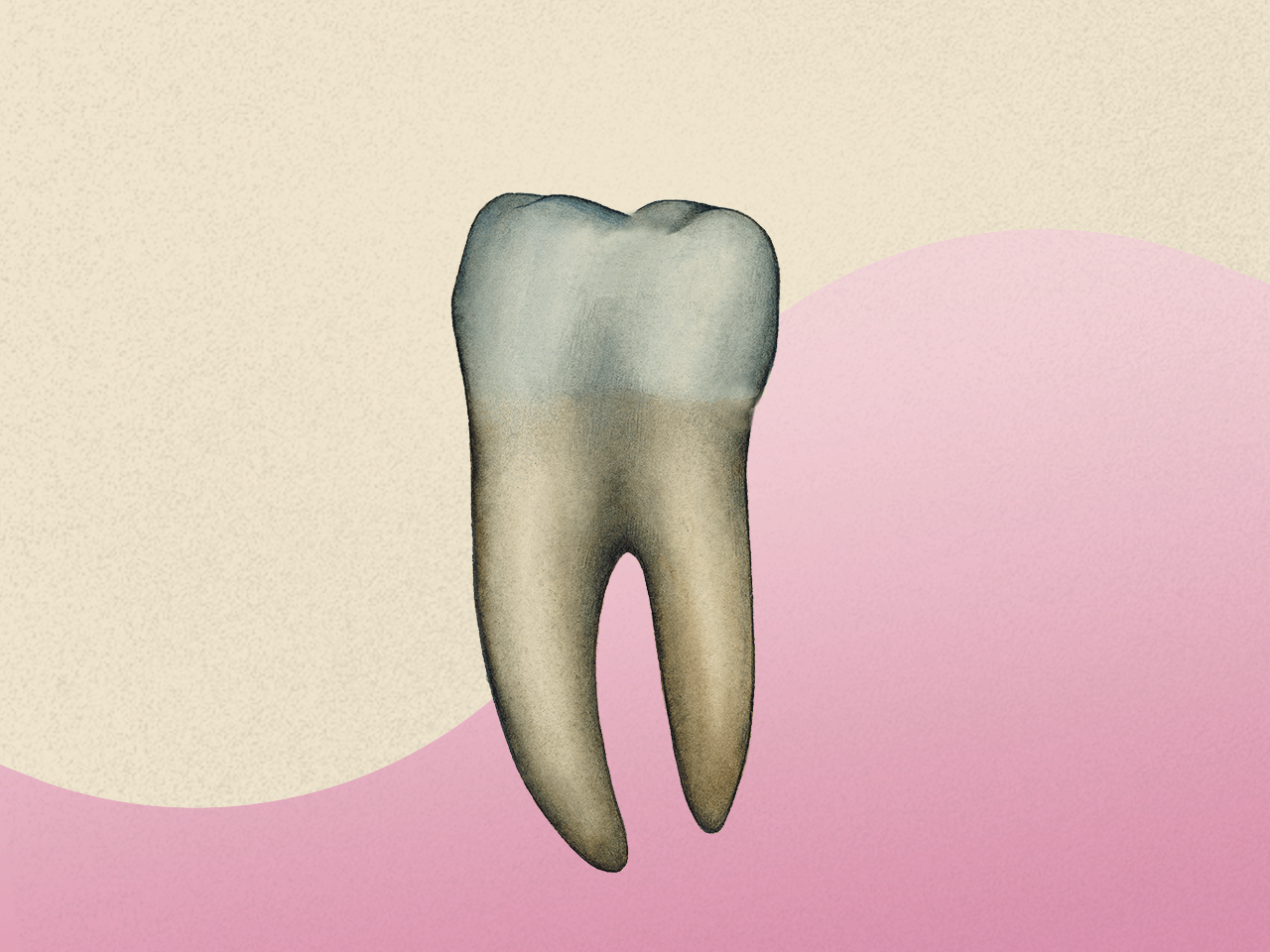If you’re scared of dental appointments, having a cavity might evoke images of being strapped to a chair while a dentist pries open your mouth, cackles maniacally, then goes to town with a massive drill. Even if you don’t hate going to the dentist, taking the time to get a cavity filled isn’t exactly convenient. So, is there any way to handle a cavity on your own? Kind of. Read on to learn the details.
Tooth decay is like a play with three parts, according to the Mayo Clinic.
First, bacteria in your mouth feed on debris and coat your teeth with a film known as plaque, the Mayo Clinic explains. This is why brushing and flossing are so important—you need to remove food and drink remnants and sweep away plaque before it hardens into a substance known as tartar, which is more difficult to remove through at-home dental hygiene.
Next up, the acids in plaque attack minerals in the protective, hard enamel surface of your teeth, which leads to holes, the Mayo Clinic explains. That allows bacteria and acids to dig into your dentin, the next, softer layer of your teeth. Your dentin has little tubes that communicate with the nerves of your teeth, which is why cavities can make your teeth sensitive as hell (especially when you eat or drink something hot, cold, or sweet). In addition to sensitivity, you may experience cavity symptoms like a small white spot on your tooth or an actual hole on your tooth (which may become stained brown or black over time).
Lastly, the determined bacteria and acid work their way down to the pulp of your teeth, which is the inner layer that contains nerves and blood vessels. This can lead to swelling and pain at the root of your teeth or even in the bone, especially when you bite down. In addition to a severe toothache, when left untreated, this kind of bacterial damage can cause infection and tooth loss.
If you and your dentist catch tooth decay early enough, you might be able to get away filling-free. “The earlier the intervention, the easier it is to fix,” Sarah Mikhail, B.D.S., assistant professor in the Division of Restorative and Prosthetic Dentistry at The Ohio State University College of Dentistry, tells SELF.
Enter: fluoride, a mineral that can reverse tooth decay that would otherwise become a cavity, according to the National Institute of Dental and Craniofacial Research. This is that stuff your dentist brushes onto your teeth or puts into a tray for you to wear for part of your appointment. Professional fluoride treatments help remineralize your teeth when plaque has damaged that protective enamel, Mark S. Wolff, D.D.S., Ph.D., dean at the University of Pennsylvania School of Dental Medicine, tells SELF.
In addition to professional treatments, your dentist can counsel you on at-home fluoride options, like a special mouthwash, Augusto Robles, D.D.S., assistant professor in the University of Alabama at Birmingham School of Dentistry, tells SELF. At-home fluoride treatments are weaker than professional ones, but they can still be helpful. Ask your dentist for recommendations, or check out the American Dental Association’s list of products with the ADA seal of acceptance, Dr. Wolff says—those have the right concentration of fluoride.
Practicing especially stellar oral hygiene can help beat back tooth decay in conjunction with professional and at-home fluoride treatments, Dr. Robles says. That means flossing at least once a day and brushing for two minutes two times a day. You might even ask your dentist to take a look at your technique in-office and make sure you’re covering all your dental bases.
The catch is that this only works if there’s a significant enough amount of tooth decay to cause a cavity, but it hasn’t created an actual hole in your tooth. They’re pre-cavities, if you will. “Once a cavity is formed, [fluoride] cannot make tooth tissue grow back,” Dr. Robles says.
As you may have guessed, you might need a filling, which is when a dentist drills out the decay then inserts some kind of material into the hole, the Mayo Clinic explains. Or you may need a crown, which is basically when a dentist drills away the decayed part of your tooth, then places a custom-fitted cap on the healthy portion, the Mayo Clinic says.
If decay has infiltrated the pulp of your tooth, a root canal may be necessary, Dr. Robles says. In this procedure, your doctor will remove diseased tooth pulp, may administer medication to clear up an infection, then will replace the pulp with a filling, the Mayo Clinic says.
Finally, if your tooth is so severely decayed that your doctor can’t fix it, it has to be taken out. Your doctor may recommend getting a bridge (which is made up of two or more crowns for the surrounding teeth and a false tooth in the middle) or a dental implant (a false tooth that’s inserted into a screw-like post drilled into your jawbone), the Mayo Clinic says.
In addition to practicing good dental hygiene, the American Dental Association recommends seeing your dentist for regular visits. Your dentist can tell you how often you need to come in based on their intimate knowledge of your oral hygiene.
The more you see your dentist, the more likely it is that they’ll pick up on any brewing tooth decay before it can do major damage, Dr. Wolff says. Translation: You might be able to avoid that drill. Just something to keep in mind next time you consider pushing back your regular dental appointment.
Related:

